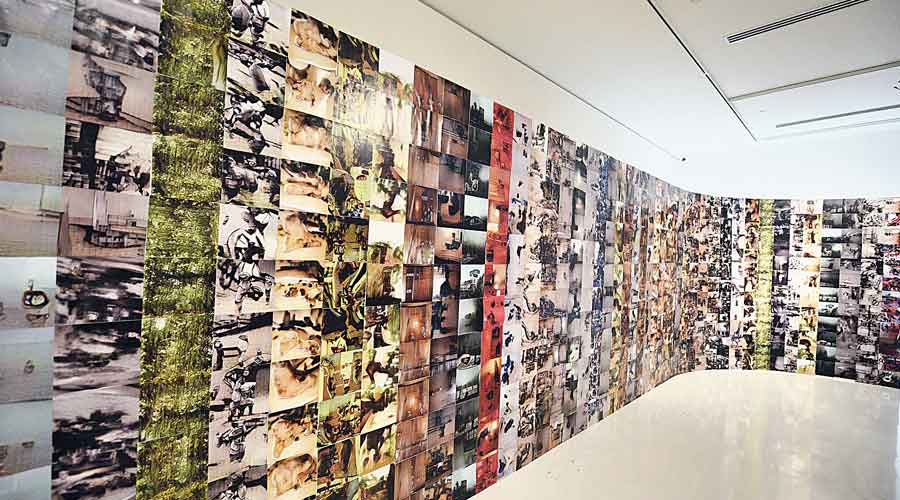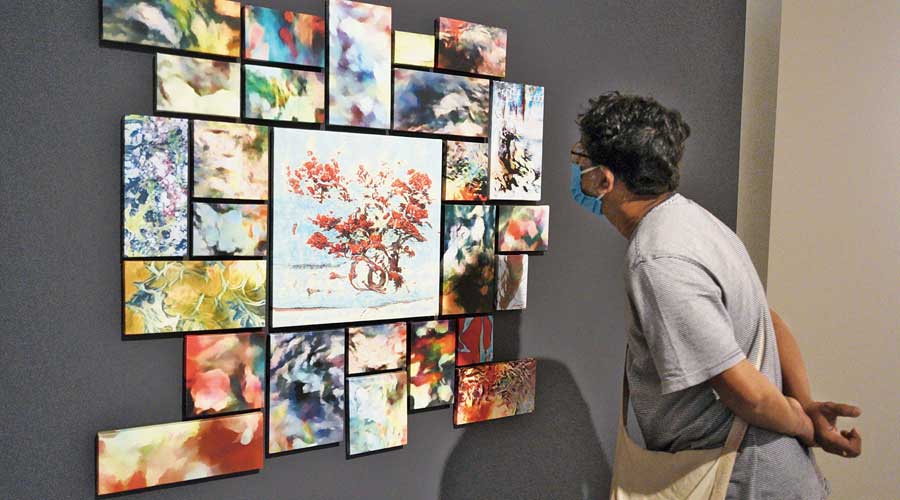At an ongoing art exhibition in the city, one installation questions the binary notion of gender. Another pits intricate details of an artwork against the composition of the subject as a whole.
Data, not paint, is the key ingredient of the artworks. Algorithms, not the brush, are the instruments. All exhibits are inspired by artificial intelligence.
Titled EXO-stential — AI (Artificial Intelligence) Musings on the Post-human, the exhibition deals with questions like:
• Is AI truly the future of contemporary art?
• For traditional artists, is AI competition or collaborator?
In one interactive work, an AI algorithm is trained to recognise objects from around 1,00,000 images from an open-source database. When a human starts to doodle something, the AI “recognises” it from the pool of familiar objects and “finishes” the drawing.
In another work, a diptych is created. On one side of the diptych, the AI develops a sense of form from studying examples of whole paintings in its collection of European still lives of floral arrangements. On the other side, the AI develops a sense of aesthetic by only studying random details in the paintings it has access to.
“Most of us are immersed in technology and AI is already an important part of our lives. Art imitates life. So, it is time to look at AI from beyond a technological or economic perspective. It is time to build a more visceral connection with AI,” said Harshit Agrawal, 29, the artist.
An alumnus of MIT Media Lab, Agrawal has been working with AI since 2015.
One of his personal favourites at the exhibition is a collaborative work titled Strange Genders.
The dataset for the work comprises around 1,000 hand-drawn figures of standing female and male forms, made by people from all walks of life. Trained with these drawings, AI is taught how to draw human figures.
The images produced have a certain probability of being recognised by a second AI which is taught to classify an object on a spectrum from “female” to “not female”, or, from “100 per cent female” to “zero per cent female”.

An artwork titled The Machine in the World of Platonic Forms on display at the AI-driven art exhibition
Two works of art are created from this process — a poster inspired by the concept of the bindu (point) or the female material as the origin of the universe, and three books that catalogue both the human binary conception of gender and the machine’s reconstruction of a gender spectrum.
When this newspaper visited the exhibition, being hosted by Emami Art, Kolkata Centre for Creativity, a painter was one of the visitors at the gallery.
“Perhaps the paint, brush and canvas do not have a future,” he told a gallery employee.
Asked the same question, Agrawal had a different answer.
“When photography emerged, painting did not go into oblivion. Painters moved from just capturing reality to interpreting it in different ways. Similarly, AI opens more possibilities,” said Agrawal.
Curated by Myna Mukherjee, the exhibition will be on till September 30.
“Harshit’s work consciously engages with this inevitable techno-centric reality we live in, rather than being simply sucked into it. AI’s usage in art elevates it from being a tool of utility and function to being a conspirator in the artist’s imagination, and the pursuit of aesthetic ideas,” says the curatorial note.
